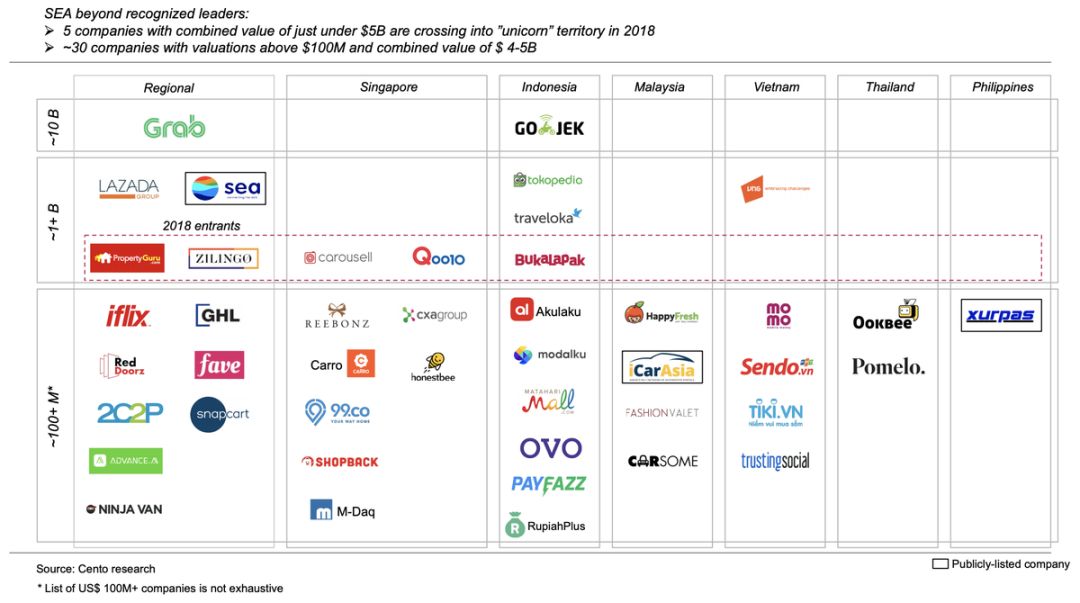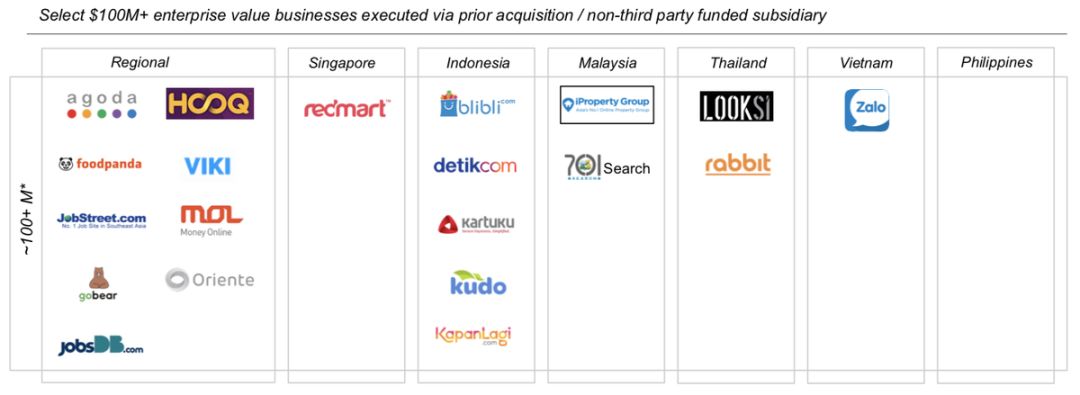Half is sea water and half is flame.
Editor’s note: This article is from WeChat public account “Deep-echo” (ID: deep-echo)< / a>, author: Zhao.
In 2019, the domestic market ushered in an important turning point: the total number of mobile Internet users peaked, and the growth dividend officially ended. The domestic mobile Internet market is shifting to the stock competition stage.
A new stage of development, sailing to the sea has become an important choice for Internet entrepreneurs.
Based on past experience, we have already learned about the diversity and complexity of overseas markets. During the National Day, the team has selected a large number of materials and market front-line cases to introduce Africa, Southeast Asia, Latin America, India, The core trends of the major destinations in the Middle East and the United States help readers explore the competitive differences in different markets and the nature of user needs, and identify opportunities.
This is the 002th article of the Global Nuggets series.
Core Points
-
The Internet economy in Southeast Asia is developing rapidly, and more than ten unicorn companies have been born.
-
The risk investment for Southeast Asia is getting hotter and hotter, and Chinese companies such as Ali Tencent have repeatedly shot.
-
Artificial Intelligence, Financial Technology, Healthcare, Blockchain, etc.The domain deserves special attention.
-
Language differences, educational penetration and other factors also pose challenges for entrepreneurs and investors.
What do you think of when you mention Southeast Asia? Is it the Songkran Festival in Thailand, or the scenery of Bali, a tourist destination in Indonesia?
In the imagination of many people, Southeast Asia is still a wild land of the Internet economy, and can only undertake medium and low-end manufacturing capacity. But in fact, six Southeast Asian countries (Indonesia, Malaysia, the Philippines, Singapore, Thailand and Vietnam) have experienced a wave of high-speed Internet economic growth in recent years, and more than a dozen unicorn companies with a valuation of more than $1 billion are here. Born.
In March last year, Uber announced its withdrawal from the Southeast Asian market and sold the taxi business to Grab as a whole. In this unexpected acquisition, a similar story with Didi’s acquisition of Uber China was staged again: Grab wanted to end its long-running money war with Uber in Southeast Asia through acquisitions and acquire Uber Eats, a Uber-owned take-away business. As a result, Grab has become the only choice for local passengers and drivers to share their travels, otherwise they will only continue to receive services from traditional taxi companies.
Grab’s “footprint” More than 200 cities in Southeast Asia
Nowadays, mergers and acquisitions and venture capital cases like this are no longer new in the Southeast Asian market.
As of the end of 2018, the total financing of unicorn companies in Southeast Asia has exceeded $16 billion, of which Grab is the first “super unicorn” with a valuation of more than $10 billion. Horned beast)
.
Lazada is the most popular service provider and fastest growing e-commerce platform in Southeast Asia. As of August this year, the annual active consumers exceeded 50 million, and orders for three consecutive quarters increased by more than 100%. The growth rate in the second quarter of the year was 128%.
Like China, the huge population means that Southeast Asia has a broad space for development. In November 2018, Google and Temasek jointly released the Southeast Asia Internet Economy Report, which shows that the Internet economy in Southeast Asia is close to 100 billion US dollars. It is expected to exceed US$240 billion in 2025, an increase of US$40 billion from the previous forecast. .
What catalyzes the rapid growth of the Internet economy in Southeast Asia? Which tracks still have good entrepreneurial and investment opportunities? As China’s first wave of dividends (including population, cost and flow) enters the final stage, if there are Chinese companies or investment institutions that want to enter the Southeast Asian market, what issues should they pay attention to?
The Internet economy is the future
There are 11 countries in Southeast Asia with a total population of about 650 million, roughly equivalent to half of China’s population. Among them, people in the 20-45 age group account for more than 45% of the total population, and 87% are distributed in 6 countries, namely Indonesia, the Philippines, Vietnam, Thailand, Malaysia and Singapore. It should be noted that India, Pakistan, Nepal and other countries on the Indian Peninsula are located in the South Asian plate and do not belong to Southeast Asia.
As of June 2019, the Internet penetration rate in Southeast Asia has exceeded 60%. Although there is still a large gap between 80-90% in Europe and North America, it is significantly higher than Africa, South Asia, etc. Countries and regions with poor infrastructure.
The latest report released by market research firm Canalys also shows that the Southeast Asian smartphone market saw a 2% year-on-year increase in shipments in the second quarter of 2019, while China’s smartphone brand accounted for 62% of shipments in Southeast Asia. Outperformed in other parts of Asia and China.
Online shopping The platform Lazada Group’s business has covered six countries in Southeast Asia
In addition, a number of recent research reports have agreed that despite the global economic downturn and trade tensions,
The strong domestic demand and good development momentum in Southeast Asia have resisted external risks to some extent, and it is expected that in 2019.The regional economy will continue to grow steadily.
Nielsen Market Research’s report shows that consumers in Southeast Asia are generally optimistic about employment and personal financial situation, and Vietnam and Malaysia’s consumer confidence index even ranks among the three most optimistic countries in the world.
But it should also be noted that among the six Southeast Asian countries, the migration of agricultural populations from Malaysia, Indonesia, Thailand and Vietnam to the industrial sector is slowing, except for Malaysia’s industrial population: the agricultural population has a ratio of 154%. In addition, the ratios of the other three countries are 47% in Indonesia, 54% in Thailand and 43% in Vietnam. In 2010-2017, the average annual growth rate of the manufacturing population in these four countries was 2.5%, 3.4%, 2.9%, and 4.9%, respectively, all below 5%.
In the context of the rapid increase in agricultural production efficiency, the absolute increase in the industrial population of Southeast Asia clearly cannot support the explosive growth of manufacturing. Therefore, the manufacturing industries in Southeast Asian countries will remain relatively stable, with opportunities mainly concentrated in the Internet sector.
In the foreseeable future, the development of the Internet economy will be a new bright spot for the growth of the Southeast Asian economy.
Risk investment is getting hotter
The 2018 Southeast Asia Technology Investment Report released by Singapore-based venture capital firm Cento Ventures shows that more than ten companies in Southeast Asia have been valued at more than $1 billion. Unicorn companies, including even the “ten horns” with more than $10 billion in valuations like Grab and Go-Jek. 
“2018 Southeast Asia Technology Investment Report” Some of these unicorn companies are still growing in their birthplace, and some have expanded their territory to Southeast Asia, where:
- Grab (taking a taxi and takeaway service provider), Lazada GrOup (online shopping platform), Sea (e-commerce platform), PropertyGuru Group (integrated real estate service platform) and Zilingo (fashion e-commerce platform) have reached the reach of most parts of Southeast Asia;
- Go-Jek (Taxis & Car Rental Service Provider), Tokopedia (Integrated E-Commerce Platform), Traveloka (Online Travel Agency), Bukalapak (Local E-Commerce Platform) and Qoo10 (E-Commerce Service Provider) choose from Indonesia External expansion;
- Carousell (second-hand e-commerce platform) is a local startup in Singapore and is accelerating its overseas presence;
- When the game company started in 2004, VNG Corporation, now a software developer, evolved into a unicorn company in a relatively underdeveloped Vietnam.
Southeast Asia Capital and transactions are mainly concentrated in Indonesia and Singapore Source: “2018 Southeast Asia Technology Investment Report”
In 2018, Indonesia and Singapore continued to dominate the investment activities in Southeast Asia, attracting overseas investment including China and the United States. The remaining investments are relatively evenly distributed in countries such as Malaysia, Thailand, Vietnam and the Philippines.
As large Indonesian companies such as Go-jek and Tokopedia have received huge sums of money, the capital invested in 2018 has mainly flowed to Indonesia. With a new batch of companies such as Ninja Van, Carousell and Carro continuing to make larger financing, Singapore continues to lead the way in capital allocation.
The Southeast Asia Science and Technology Venture Capital Development Report released by the China Research Institute shows that since 2016, the total scale of technology investment in Southeast Asia has reached 26.295 billion US dollars, and the average fundraising amount of the project is 20.3 million US dollars. among them,
China Capital is the largest source of investment in Southeast Asian technology companies, accounting for half of the country.
In addition to the larger scale, Chinese local capital’s investment in Southeast Asian technology companies has also increased year by year, for the past three years as an example:
-
The number of investment cases in 2016 is 19, with a total investment of 1.954 billion US dollars and an average investment of 103 million US dollars;
- The number of investment cases in 2017 is 34, with a total investment of 3.904 billion US dollars and an average investment of 115 million US dollars;
- The number of investment cases in 2018 is 62, with a total investment of 5.743 billion US dollars and an average investment of US$93 million.
Affected by objective factors, investment in 2019 declined. The data shows that in the first half of 2019, the number of investment cases of Chinese local capital Southeast Asian technology enterprises was 27, with a total investment of 1.612 billion US dollars and an average investment of 60 million US dollars.
From the distribution of the invested companies,
Online travel, online media, e-commerce, online car and other fields continue to receive the attention of venture capital institutions.
In particular, those funds that have already completed a large amount of fundraising are more likely to look for potential start-ups to invest in helping them grow into tomorrow’s unicorns after Grab, Go-Jek, Traveloka and other companies.
According to the number of investment shots, 63% of Southeast Asian Chinese domestic investors are venture capital institutions, and 37% of Chinese domestic investors are funded by corporate investment. Internet giants such as Alibaba and Tencent are typical representatives of Southeast Asia.
Among them,Alibaba plans the layout of the main business of e-commerce. Alibaba is the largest investor in Chinese companies and the main driver of e-commerce in Southeast Asia. It has invested more than $6 billion in Lazada and Tokopedia before and after this.The two companies are two of the Big Three in Southeast Asia. Ali also invested in some financial technology companies due to the consideration of layout electronic payment and the spread of Alipay overseas.
Tencent’s investment in Southeast Asia reflects a certain color against Ali. For example, Tencent’s four rounds totaled more than $1 billion in investment in Southeast Asian travel giant Go-Jek, with the intention of countering Ali’s e-commerce market through a market for transportation; through the acquisition of Philippine electronic payment company Voyager To counter the electronic payment brand Mynt invested by Ali.
New Opportunities in New Markets
Greek Capital’s Managing Partner, Fu Jixun, once said that the opportunity to invest in Southeast Asia lies in the “low frequency, high value” industry, which is “subversive”. The time is ripe, not the “high frequency, low value” industry like cars and food delivery. At the same time, Southeast Asia may also bypass the existing development stages of other countries and jump directly to higher dimensions.
Southeast Asia has many start-ups with high development potential Source: “2018 Southeast Asia Technology Investment Report”
At present, in addition to the already hot online travel, online media, e-commerce, online car and other fields, artificial intelligence, finance Technology, health care and blockchain are four other areas of focus in Southeast Asia.
-
Artificial Intelligence: Although the current global artificial intelligence development center is mainly located in the United States and China, for Southeast Asia, artificial intelligence Technology can liberate a large number of laborers in Southeast Asia and significantly increase local production efficiency.
-
Financial Technology: Although financial regulation in Southeast Asian countries is quite strict, for example in the Philippines, the establishment of a company must have a local partner, accounting for one





